Political Science - Modern Party system | 11th Political Science : Chapter 9 : Public Opinion and Party System
Chapter: 11th Political Science : Chapter 9 : Public Opinion and Party System
Modern Party system
Modern Party system
A. Party system in the United Kingdom
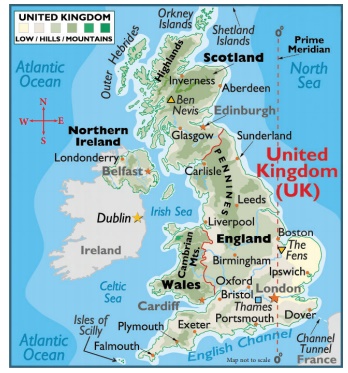
In the United Kingdom, polarization of opinions on
issues relating to the status and role of monarchy led to the emergence of two
parties:
A. Tories or Conservatives and
B. Whigs or liberals.
In the 20th century labour party became a major
force eclipsing the liberals.
B. Party System in the USA

The founding fathers of the United States wanted to
steer clear of political parties and the ensuing factional conflict between
them. Nevertheless, after American Independence, the first parties in the newly
constituted nation under the Presidency of George Washington were the
Federalist Party supporting a strong national government and the Democratic
Republican Party supporting state autonomy.
Two Party System
v Rare around the world
v Evenly balanced national at National
and local level
v Electoral system
v Winner take all
v Wasted vote
v Priority system
v Broad coalitions form before election
v Opinion of voters
v Difficult for third parties to get on
ballot
In 1828, the democratic Republican Party was renamed as the Democratic
Party which championed state rights. In 1854, the Republican Party established
itself on the anti slavery platform and gained pre-dominance with Abraham
Lincoln as President of USA.
Since the United States settled for the Two-Party
system, the Republican and Democratic parties have dominated the American
political scene, though third party candidates have been floated on and off.
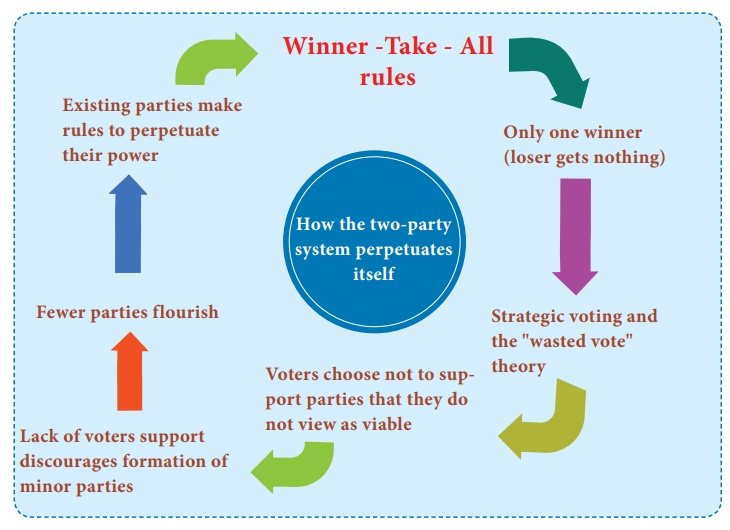
C. Party system in Europe:
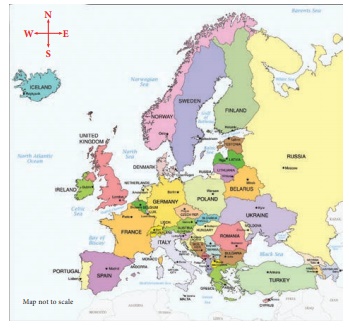
After the French Revolution (1789), democratic
forces gained strength in European Nations, and political parties emerged.
Political parties in Continental Europe were largely divided into
Conservatives, Liberals, and Christian Democrats. By the 19th century socialist
movements gained popularity and social democratic or labor parties emerged
which became popular and gained trade union support.
In Soviet Russia, the Bolshevik Party, was
responsible for the Communist Revolution in 1917 which created the USSR (Union
of Soviet Socialist Republics), popularly called the Soviet Union. The
COMINTERN (Communist International) was established with the task of
encouraging world communist revolution by supporting Communist parties in other
countries. After the end of the Cold War era, the Communist party lost its
popularity in Russia, though some minor communist parties still influence
governmental policies within democratic states. Communist Parties however
continue to control authoritarian governments in China and North Korea.
Democratic political systems are often reactive and
responsive to the basic socio –economic values of their citizens. There has
always been significant transformations in values and these are reflected in
the political opinion of the people through political parties and their varying
objectives. By late 20th century, socio -economic factors impacting Europe were
reflected in the emergent types of parties some of which were more
nationalistic and less open-minded, vocalizing their sentiments against
immigration and the refugee influx that they see as a threat to European
culture, security and economy.
D. Party System in South Africa
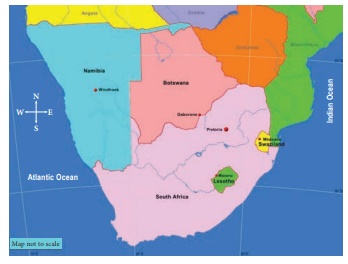
In African countries, political parties were at
first formed to secure decolonization. In many decolonized African countries,
political parties are struggling hard against militarism.
E. Party System in India
The party system in India emerged along with the
rise of nationalism and out of the freedom struggle against British rule. While
Indian politics today represent a multi-party system, for long periods in
Indian political history, one party has dominated the political stage. The
Indian National Congress (INC) was established in 1885 by A. O Hume, as the
indigenous base for the political
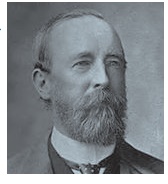
It demanded political reforms in gradual stages. After the non
– cooperation movement (1921-23) Indian National Congress began to demand
absolute political freedom. In the 20th century, the parties with communal
agenda have also come up i.e. The All India Muslim League in 1906 and Hindu
Maha Sabha in 1916. In the Madras Presidency the South Indian Liberal
Federation (Justice Party) was formed to project their interest of the
Non-Brahmins (Dravidian).
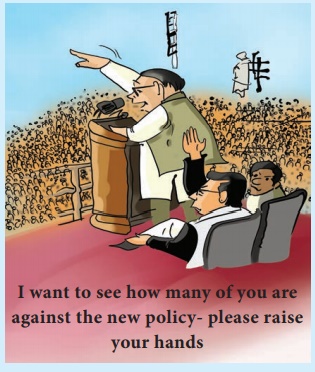
However, the Indian National Congress represented
the urban, upper caste elite, mostly western educated and provided a platform
for negotiations with the British government. Gradually the Indian National
Congress evolved to play a pivotal role in the development of India’s political
party system. After the partition of Bengal in 1905, the Indian National
Congress was divided between the Moderates (policy of petitions) and the
Extremists (aggressive militant strategy). The formation of the Muslim league
in 1906 resulted in the era of conflicting political bargaining, reflected the
true beginnings of the Indian party system.
The entry of Mahatma Gandhi into the political scene with his moral-ethical focus on non-violence as a political ideology and strategy, transformed the Indian National Congress to represent all sections of Indian society - the poor agriculturalists and lower caste people. Other parties that also emerged representing specific goals which included the Swaraj Party formed by Chittaranjan Das in 1922, the Congress Socialist Party, formed in 1934 by Acharya Narendra Dev and Jayaprakash Narayan and the Communist Party, formed in the 1920’s by the efforts of M. N. Roy were the other major political parties.
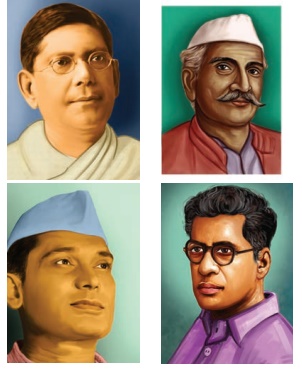
There were a number of political parties which
carry on political campaigns and propaganda, but do not contest elections, they
function as pressure groups. Till 1977, the Communist Party, the socialist
parties, and the right wing Janasangh were the mentionable opposition parties
at the national level.
Until 1977, no single party could become an
alternative to Indian National Congress at national level. Hence, a number of
so called national parties, under the stewardship of Jayaprakash Narayan,
merged to create a large national alternative party known as Janata Party. In
1977, it captured power at the centre. Yet this party lacked cohesion and unity
and became shattered after 1980. The Jana Sangh was revived with a new name
Bhartiya Janata Party, Meanwhile Kanshi Ram’s Bahujan Samaj Party emerged as
national level party with social justice as its main plank. The Communist Party
of India (Marxist) became very powerful in a few states like Kerala,West Bengal
and Tripura.
The 1990s was the period of an increasing quest
towards coalition governments in Indian politics. The Indian Political System
became more competitive, more democratized and more representative of the
multicultural social nexus and diversity that is observed in contemporary
India. It is observed that old parties became obsolete and defunct, and new
parties have emerged that represent and seek to address the trans formative
challenges faced by various diverse sections of the people. Since the 1990’s we
see a federalization of politics with regional parties gaining greater
influence, representative of regional aspirations against the dominance of the
Centre.
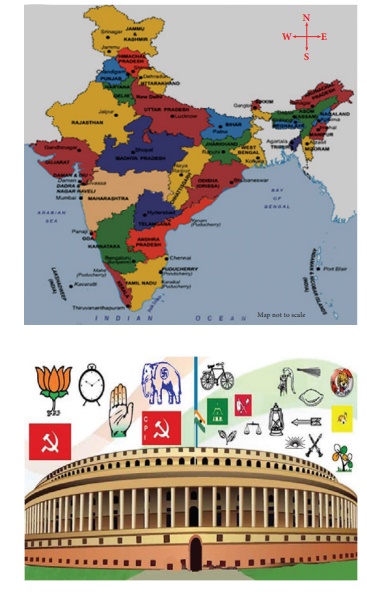
In the present period, regional alliances indicate
a growing trend towards coalition governments that form an effective voice in
favour of federal polity. This fragmentation is largely due to the
regionalization of politics, with parties having high support base in specific
areas.
Regional Parties
Shiromani Akali Dal in the Punjab, Samajwadi Party
in the Uttar Pradesh, Telugu Desam Party in Andhra Pradesh, Rashtriya Janata
Dal (RJD) in Bihar, Trinamool Congress in West Bengal, Telangana Rashtra Samithi in Telangana, Asom
Gana Parishad in Assam, Shiv Sena in Maharastra, National Conference, People
Democratic Party in Jammu & Kashmir, Dravida Munnetra Kazhagam(DMK) and All
India Anna Dravida Munnetra Kazhagam (AIADMK) in Tamil Nadu are some of the
major regional parties.
While there is growing political awareness among
the electorate, there is also greater mobilization along lines of regional,
social and religious identities.
There is a widespread difference in the composition
of political groups, and characteristics of political and social groups between
one region and another.
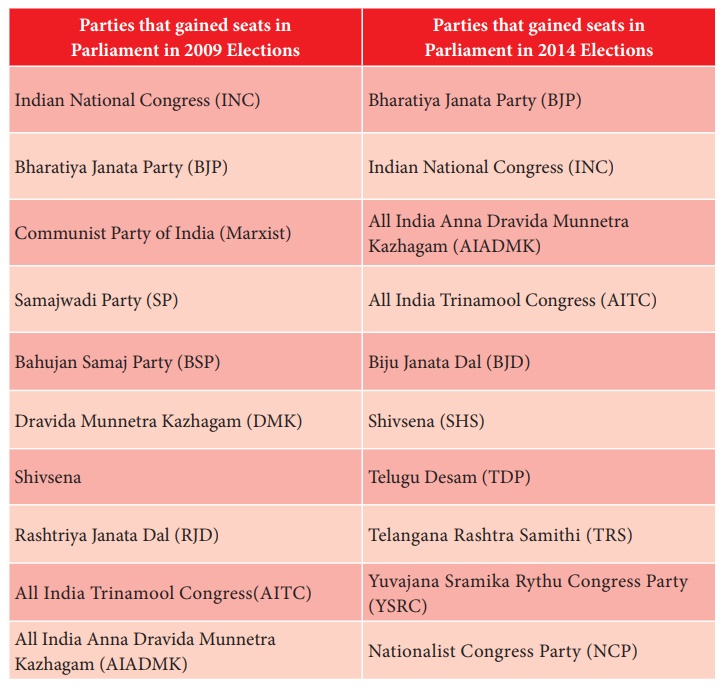
Party System in Tamil Nadu
In Tamil Nadu, like most Indian states, the early
independence period was dominated by the Congress party. However, issues of
caste hierarchy, and the rising North South divide eroded the popularity of
Congress leadership in the state. The Dravidian movement regenerated in Tamil
Nadu under Periyar E.V Ramasamy and garnered popularity on assertion of
Dravidian Rights and Dignity and through an anti-North, anti-Hindi,
anti-Brahmin social agenda.
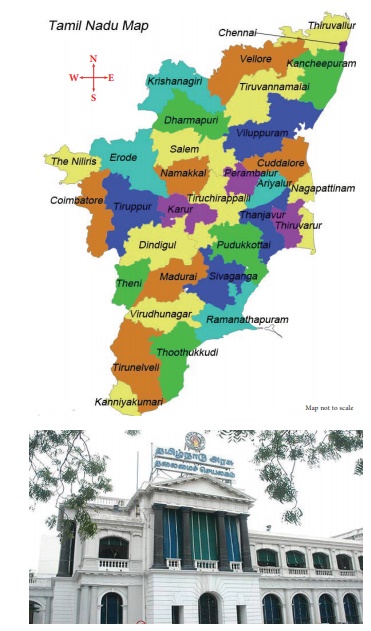
The Party System in Tamil Nadu is a pioneer model of the pre-eminence of the regional parties in state politics of independent India. There are very clear socio-economic, cultural and historical reasons for this development. The long history of rationalist and social justice movements from the colonial era and the mobilization of Dravidian consciousness since the beginning of 20th century have fundamentally transformed the nature of politics and the future of party system in state politics.
Related Topics